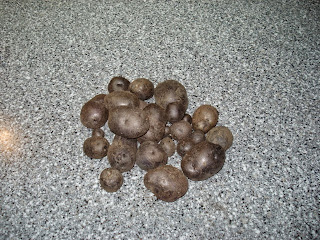 |
| Finished "stream" |
 |
| Beginning the project |
 |
| Taking shape |
Within a few hours of the stream bed flowing in daylight
operation, there were two hummingbirds that came to investigate the small water
falls in the small upper & lower pools, plus the water running through the
actual stone-filled bed connecting the two pools. I’d read that they were drawn to moving water
and now I can attest, as I watched them tip-toe into the water take a ‘big-bird
style’ bath and come out shaking the excess water off like a dog! Shortly after
this happened, a big red tail hawk appeared in an adjacent pine and started
watching for activity. However, within 2
days he realized there were no fish to be had, so he moved on. About this time, I also discovered I’d made
my own big butterfly puddle as well. I had two late summer fritillaries that
came to enjoy the sun & water one afternoon. The blooming flowers were at a
premium, so it was fun to see them at the edge of the stones, drinking and
soaking up the sun on their wings. The
elk have had their turn drinking from the streambed and recently a migrating
flock of robins enjoyed the stream and pools for their afternoon community
swim.
I’ve rediscovered the peace and tranquility that gentle
running water offers … especially outside in a natural setting. (May I also add
the effect is not the same when the sounds may come from below a kitchen sink
or a laundry room??) Even a small scale
fountain from your local garden center on a back deck or sunroom can provide
hours of quiet and thoughtful times … just ask me how many chores are getting
done while I wait to refill this feature for returning birds next Spring.



